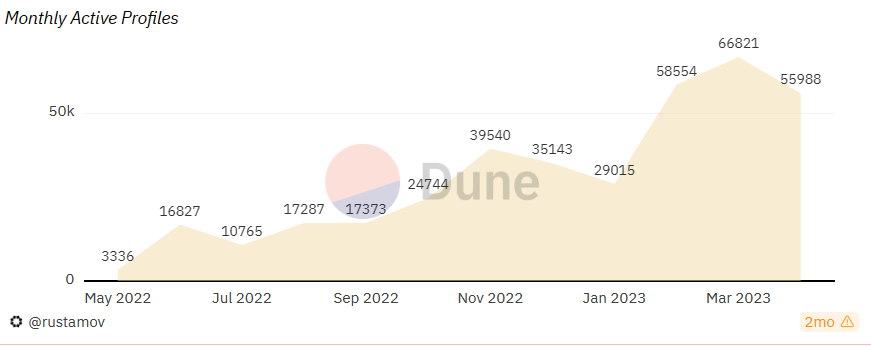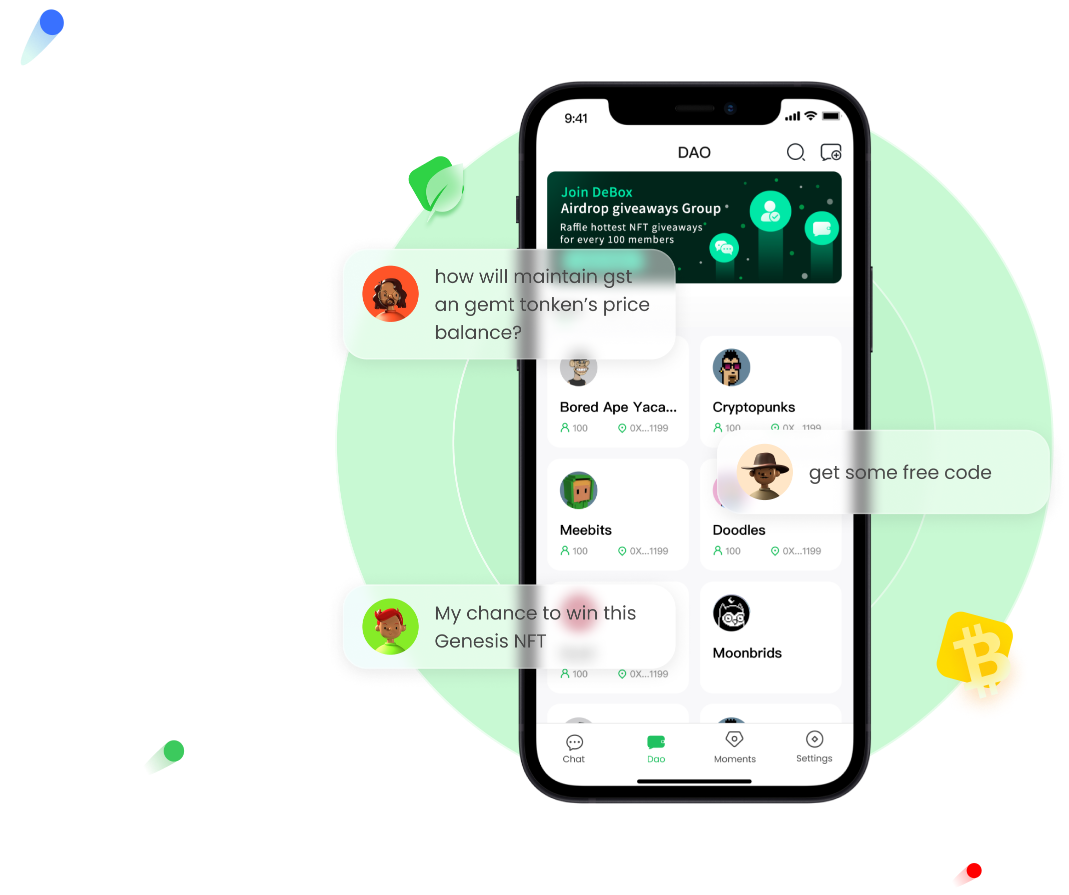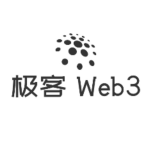Analysis of Web3 Social Platforms: The Road Ahead is Long and Challenging
Author: DefiOasis
Editor: Link, Geek Web3
Since the era of primates, social interaction has been an important part of human social life. For humans, who are social animals, the importance of socializing is self-evident. In the internet age, social scenarios have gradually moved online, breaking geographical limitations. Social activities have transformed from familiar socializing based on geography to stranger socializing based on interests, with various platforms acting as "public squares" where people who have never met can discuss topics such as entertainment, politics, and economic life.
However, as Web2 social platforms gradually monopolize the market, the drawbacks of the Web2 social model have become increasingly apparent. From Reddit suppressing third-party application developers to Twitter breaking its long-standing "free" model, the flaws of social platforms under giant monopolies have been laid bare.
 Image source: crypto4
Image source: crypto4
At the same time, Web3 social has become a trending keyword, with "decentralized social" evidently becoming one of the top ten areas of focus for leading institutions like Paradigm. Although Web3 social cannot be considered a new narrative, against the backdrop of frequent data leaks, privacy scandals, and algorithmic biases on Web2 platforms, Web3 social, characterized by decentralization, censorship resistance, user-centricity, digital asset empowerment, and identity interoperability, is gradually gaining more attention.


1. Current Status of the Social Track
1.1 High Ceiling of the Social Track
Social products have immense imagination in the capital market. According to the "2022 Global Digital Overview" report, the number of global social media users exceeds 4.62 billion, accounting for 58.4% of the world's total population. Taking Facebook, the leading company in this track, as an example, its peak market value exceeded $1 trillion, once ranking among the top ten listed companies globally.
According to Facebook's Q4 2022 financial report, the average daily active users (DAU) of Facebook's suite of products is nearly 3 billion, accounting for one-third of the global population. Additionally, the valuations and market capitalizations of social operating companies like Twitter, Snapchat, and Weibo indicate that the ceiling for the social track is extremely high. Given the current small user base of Web3 social, the growth potential in this track is evidently vast.
1.2 Global Social Media Users Continue to Grow, but Growth Rate is Gradually Slowing
Since the global proliferation of internet infrastructure, the number of social media users has shown rapid growth, especially during the Covid-19 pandemic, which greatly accelerated social media adoption.
 Image source: datareportal.com
Image source: datareportal.com
According to data from Kepios, the number of global social media users has increased by nearly 30% in the past three years, with a net increase of over 1 billion. However, as countries lift pandemic restrictions and relax population movement controls, socializing has returned to offline modes, leading to a significant slowdown in social media adoption growth. In the context of weak growth in social media, Facebook has shifted its strategic direction towards the metaverse.
1.3 Current Issues with Web2 Social Platforms
Despite social software companies having clear information management regulations and laws in different countries or regions, issues such as chaotic censorship, algorithmic bias, and data misuse or leaks still exist. From Facebook's "Election Gate" incident to Reddit's forced API charges provoking backlash from developers, and Musk's throttling of Twitter to "prevent addiction" inciting public outrage, these phenomena reflect that Web2 social software companies, driven by capital, cannot be user-centric. User data can be exploited by large companies to profile users, making it difficult for individuals to abstain from social software addiction.
2. Value of Web3 Social
2.1 Value and Power Redistribution
Since the advent of the internet, social products have always balanced the interests among three parties: users, platforms, and creators, which essentially forms an impossible triangle. In the Web2 social model, platforms sit at the top of the food chain, but with the emergence of Web3 social, the value/power distribution relationship among the three has changed.

User Sovereignty: Web3 social innovates the paradigm of social ownership, helping users reclaim sovereignty. By putting user data on-chain and utilizing the censorship-resistant characteristics brought by decentralized nodes, user sovereignty is ensured, including ownership of data such as consumption and browsing preferences, privacy rights, and sovereignty over digital assets and identity.
In addition, in some Web3 products, users can also exercise their agency, such as co-owning content works to earn royalties on Mirror, or holding tokens on Chiliz to participate in decision-making for sports and entertainment clubs.
Reshaping the Creator Economy: In Web2 social products, platforms like Weibo and Twitter share platform revenue with creators, but there are generally high thresholds, low returns, and income distribution limitations like the 2/8 rule. For example, recently, Twitter's incentive for content creators requires meeting the stringent condition of accumulating 5 million views on tweets over three months to share in revenue, and also requires subscribing to Twitter Blue.

However, driven by Web3 social products, content creators become "real workers" rather than "alienated individuals." The Write To Earn model provided by Web3 platforms allows creators to monetize based on quantifiable data such as clicks and shares, and can also provide additional income channels like Lens; furthermore, using the traceability of Web3 records, creators can mint NFTs while publishing content, ensuring copyright protection.
2.2 Decentralized Governance
Unlike traditional social media platforms that possess absolute governance power, a significant portion of governance authority in Web3 is decentralized to the community. Content review and ownership are handed over to the community to avoid the abuse of content review and censorship rights due to manipulation by capital or concentration of power. Users can allocate governance rights by holding certain NFTs or tokens, making the decision-making process more democratic and transparent.

2.3 Decentralized Identity Interoperability
In traditional internet socializing, the connection of identities between different products has strong barriers, leaving users in data silos. For example, identity credentials from Tencent and Alibaba's products cannot interoperate, requiring users to constantly register and verify their identities to move across different platforms, making multi-platform non-interoperability a pain point for Web2 digital identity.

In Web3 social scenarios, only one digital identity is needed, allowing users to experience a rich array of scenarios in more composable and open protocols. For instance, users can use the same ID in CyberConnect and Lens Protocol to engage in various social behaviors such as video watching, image and text socializing, and instant messaging.
3. Brief Analysis of Web3 Social Platforms
Web3 social is broadly defined, mainly referring to Web3 technologies and related social products. Due to space limitations, this article will categorize existing Web3 social projects into infrastructure and application layers and briefly analyze them.
3.1 Infrastructure
Lens Protocol
Lens Protocol is a decentralized social graph built on the Polygon chain by the Aave team, centered around NFTs for interaction, and is one of the mainstream Web3 social protocols today.

To participate in Lens, users first create a personal profile NFT (Profile NFT), which serves as the primary object of interaction. Users holding a Profile NFT can create content, and all created content is recorded on the Profile NFT and on-chain.
Interactions that Lens users can engage in include content creation, collection, sharing, etc. Among these, content publishing (Publication) is the core of Lens interaction, which can be further divided into posts, comments, and mirrors, with posting being the main function and commenting and mirroring being additional features. Creators can monetize their published content and can also earn income through e-commerce, knowledge payment, etc., on Lens.
 Lens is built around collection, commenting, and mirroring.
Lens is built around collection, commenting, and mirroring.
Other users can follow the creator's homepage to obtain Follow NFT and can collect content published by the creator to obtain Collect NFT. Most of the social interaction behaviors of users will be preserved and recorded on-chain in the form of NFTs, completing the confirmation of data ownership.
Thanks to Lens's modular design and open developer environment, the number of ecosystem products has already exceeded 100. Moreover, due to the composability of Lens Profile NFTs, the more products there are, the more diverse the application experiences will be. Users can also port their data to applications, including social applications like Lenstube, Lenster, Phaver, and LensFrens, which encompass music, video, and image/text content. Most of these DApps operate similarly to mainstream Web2 social products, providing a smooth experience for users trying out new applications.
 In addition to the aforementioned features, more open operational spaces will be released after Lens V2, including: minting and purchasing NFTs, joining DAO organizations, making Gitcoin donations, accepting paid DMs, etc.
In addition to the aforementioned features, more open operational spaces will be released after Lens V2, including: minting and purchasing NFTs, joining DAO organizations, making Gitcoin donations, accepting paid DMs, etc.
However, Lens Protocol also has certain limitations, such as the need to pay gas fees for each on-chain operation and being restricted to the Polygon chain. Additionally, since Lens aims to attract high-quality users in the early stages of the project, the number of registrations has been limited, with around 100,000 Profile NFTs currently circulating, still a small circle game. This situation may improve as Lens is about to open registration for the V2 version.

Although Lens currently only has 100,000 Profile NFT qualifications open, the monthly active users account for more than half of the total addresses.
CyberConnect
CyberConnect is a decentralized social graph protocol and is also one of the leading players in the Web3 social track.

CyberConnect has three core components, including CyberProfile (decentralized digital identity), CyberConnect Social Graph (social relationship graph), and CyberWallet.
Similar to Lens Protocol, CyberConnect also focuses on returning interaction data to users, with personal profile NFT (cc Profile) at its core, helping users build social graphs. Its NFTs have composability and can flow freely within the ecosystem. Currently, it has integrated with multiple high-quality applications such as Link3, Phaver, and ReadON. Link3, as the official application of CyberConnect, covers various functions such as socializing, content publishing, community, and task publishing, making it a key point for user interaction.
When the CyberConnect protocol connects to different applications, it can directly bring user data to other applications, such as friend data and identity data, with the authorization of data permissions depending on the user. However, some community members have reported that displaying user data captured by CyberConnect on personal interfaces poses certain privacy risks.

Users build their identity, publish content, and connect with other users centered around the CyberProfile NFT.
Unlike Lens Protocol, which can only be used on the Polygon network, CyberConnect has better scalability, supporting multi-chain aggregation including Ethereum, BSC, Solana, and Polygon. Additionally, CyberConnect does not impose strict entry barriers for users, with over 1.2 million users registered for its Profile NFT, and the number of monthly active addresses accounting for 70% of the total addresses. However, after CyberConnect announced its token issuance plan, its activity and user registration numbers have declined.
Apart from these two leading Web3 social infrastructure protocols, other Web3 social infrastructures like Farcaster, Deso, and Nostr are also worth paying attention to.
3.2 Social Application Layer
Mirror
Mirror is a censorship-resistant content creation platform launched by A16Z partner Denis Nazarov and is currently one of the mainstream content creation platforms in the Web3 space. Mirror is centered around "user creates, user owns," with creators minting NFTs for each article published, storing the created NFTs on the Optimism network and potentially on Arweave for permanent preservation.

Creators can earn income on Mirror through crowdfunding, auctions, collaborative contributions, and other means. However, Mirror also has some drawbacks for creators, such as lack of content review, no guarantee of content accuracy, frequent bugs when editing articles, and inadequate resolution of copyright infringement from plagiarized content.
Debox
Debox is a Web3 social platform based on DID, with an interface similar to WeChat and functions akin to Discord and Twitter. The main features of Debox are as follows:
Chat: Users can chat directly within the community in this section. Notably, Debox offers the option to join groups based on asset holdings, where users can only enter groups if they hold the community's assets and can rank based on their holdings, which reduces irrelevant information to some extent.
Dynamics: Similar to Twitter, there is a dynamic information flow display, which can be divided into user-followed and recommended squares. Users can post dynamics, comment replies, like, and collect posts in this section.
Community: Debox categorizes communities into Token communities, NFT communities, and Clubs, allowing users to join communities based on their preferences.

In addition, Debox has added unlimited members in groups, community management tools such as voting, proposals, and providing users with Token authorization checks, NFT trading, etc., enhancing usability.
Damus
Damus is a social application built on the decentralized social protocol Nostr. Damus features notes (similar to Twitter's homepage square), private messaging, notifications, search, etc., with an experience similar to Twitter. When users create an account, a public key and a private key for identity verification are generated, allowing content creation without review and with no risk of deletion, providing strong censorship resistance, fully owned by the users.
Leveraging the celebrity effect of former Twitter CEO Jack Dorsey, Damus and Nostr gained significant attention shortly after launch, but due to a lack of regulation, it quickly became a platform for spam content, leading to a sharp decline in application activity.
4. Dilemmas of Web3 Social
4.1 Login Barriers Limit New User Influx
For a new Web3 user, there are primarily two major barriers to entering Web3 social.
On one hand, there is the wallet barrier. New users need to understand private keys, public keys, mnemonic phrases, etc., and the gas fees for different chains vary significantly in terms of native assets. However, with the popularization of MPC or AA wallets, this barrier will gradually decrease.
On the other hand, there is the cognitive barrier. Compared to mainstream Web2 social applications, Web3 social interactions require gas fees and an understanding of a series of terms like POAP, ENS, and NFTs.
4.2 Web3 Social Lacks Breakout Effect Applications
Web3 social products have poor marketing effectiveness and limited marketing capabilities for their own products. This is true even for leading Web3 social players like Lens Protocol and CyberConnect; Lens Protocol has a limited number of open registrations, resulting in a small number of registered users and a lack of scale effect in community promotion. CyberConnect has faced criticism from the community for its excessive marketing activities, such as PUA users to participate in "bottle cap picking" activities, leading to a poor reputation.
Payment habits have not formed. Most users are accustomed to using mainstream Web2 social products for free, and they find it hard to understand the payment model of Web3 social products, which requires purchasing Profile NFTs and paying gas fees for interactions.
Most Web3 social applications simply replicate the templates of Web2 social platforms without significant innovation, and the pain points they aim to address have limited appeal to users. For most users or creators, there is no significant demand.
4.3 Strong User Stickiness of Web2 Social Applications
Due to the first-mover advantage of traditional social media, Web2 social applications not only have a large user base but also consist of long-term active users.
For non-Web3 users, this group has already established mature relationship circles within Web2 social products, and few users are willing to abandon their existing social capital to enter unfamiliar products. It is challenging for Web3 social to siphon off these users.
For native Web3 users, without other significant needs, using only Twitter, Discord, and Telegram—these Web2 social applications—can meet their demands.
However, for social products, the scarcity of users and creators will ultimately lead to insufficient revenue generation capability, which is fatal.
4.4 Lack of Strong Regulation: Can Good Community Norms Be Established?
While Web3 social allows for freedom of speech and access to information, whether it can form reasonable community norms and strike a balance between freedom and fairness remains widely questioned. The decentralized social media application Damus, strongly supported by former Twitter CEO Jack Dorsey, quickly became filled with a large amount of borderline pornographic or financial scam content shortly after its launch due to a lack of review and regulation, turning into a "social garbage dump."
Although former U.S. President Trump was banned from major Web2 social media like Twitter and Facebook, his extreme nationalist and anti-common-sense rhetoric was not further disseminated, and this move still received support from most people.
In most decentralized social platforms, due to the absence of censorship and lack of moral or legal norms, the spread of garbage content becomes quite easy. Against the backdrop of rising global populism, nationalism, and extreme religious forces, Web3 social product teams or communities need to correct errors in the post-truth era and take responsibility for guiding across national customs, religious beliefs, and violent content.
5. SocialFi (X To Earn) is Not the Final Answer
The long-term success of Web2 social products does not solely rely on the WRITE TO EARN model to attract users; it also benefits from the presence of high-quality content over time. While the X TO EARN model can incentivize user activity for a certain period, like most Gamefi projects, relying solely on the X TO EARN model does not have strong long-term appeal for users.
For example, the Socialfi project Monaco Planet, which became popular at the end of 2021, spawned a large number of accounts seeking token rewards for content creation, resulting in a significant amount of ineffective redundant information on the platform. This model has strong Ponzi attributes; when returns decrease, user activity will sharply decline. In the competitive landscape of social media platforms, lacking high-quality content equates to losing a competitive edge, which is also what decentralized social platforms currently lack, explaining why most Socialfi projects have short lifecycles and ultimately go unnoticed.
Innovation in product forms, from portal websites to social media platforms, has birthed new social product forms with each WebX social revolution. Web3 products should not be limited to adding financial attributes to Web2 product models.
Building social products centered around niche vertical interests based on affinities is essential. Due to login barriers and social scenarios, the chances of Web3 social products becoming mainstream are far less than those of Web2 social products. However, attempts can be made to attract differentiated subgroups, such as Chiliz targeting sports fans and Audius gathering music-loving creators.
Attracting high-quality content creators and users, whether in Web2 or Web3, requires a long-term accumulation of both quantity and quality of users and creators.
Additionally, attention must be paid to mobile development. There is a high demand for user social interaction on mobile devices, but most current Web3 social products are developed for web platforms, neglecting vertical screen needs.
According to Triple-A data, cryptocurrency users number around 420 million, accounting for less than 5% of the global population, a figure that is trivial compared to Web2 social users. Even for leading protocols like Cyberconnect, the user count remains around 1 million, with a significant portion being multi-account addresses aimed at airdrop expectations. The user count of leading protocols in the social track can only be considered as a newborn, and in the "fat protocol, thin application" environment of Web3, the emergence of killer social applications is even more challenging. From the current situation, Web3 social is more likely to remain a niche within the social track.














